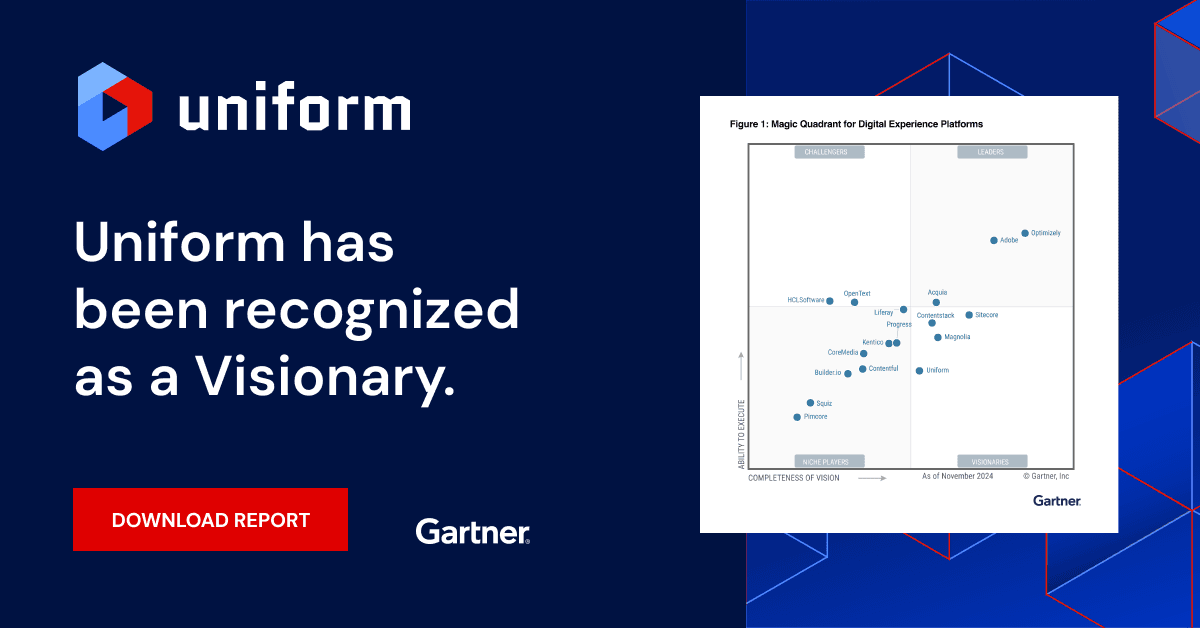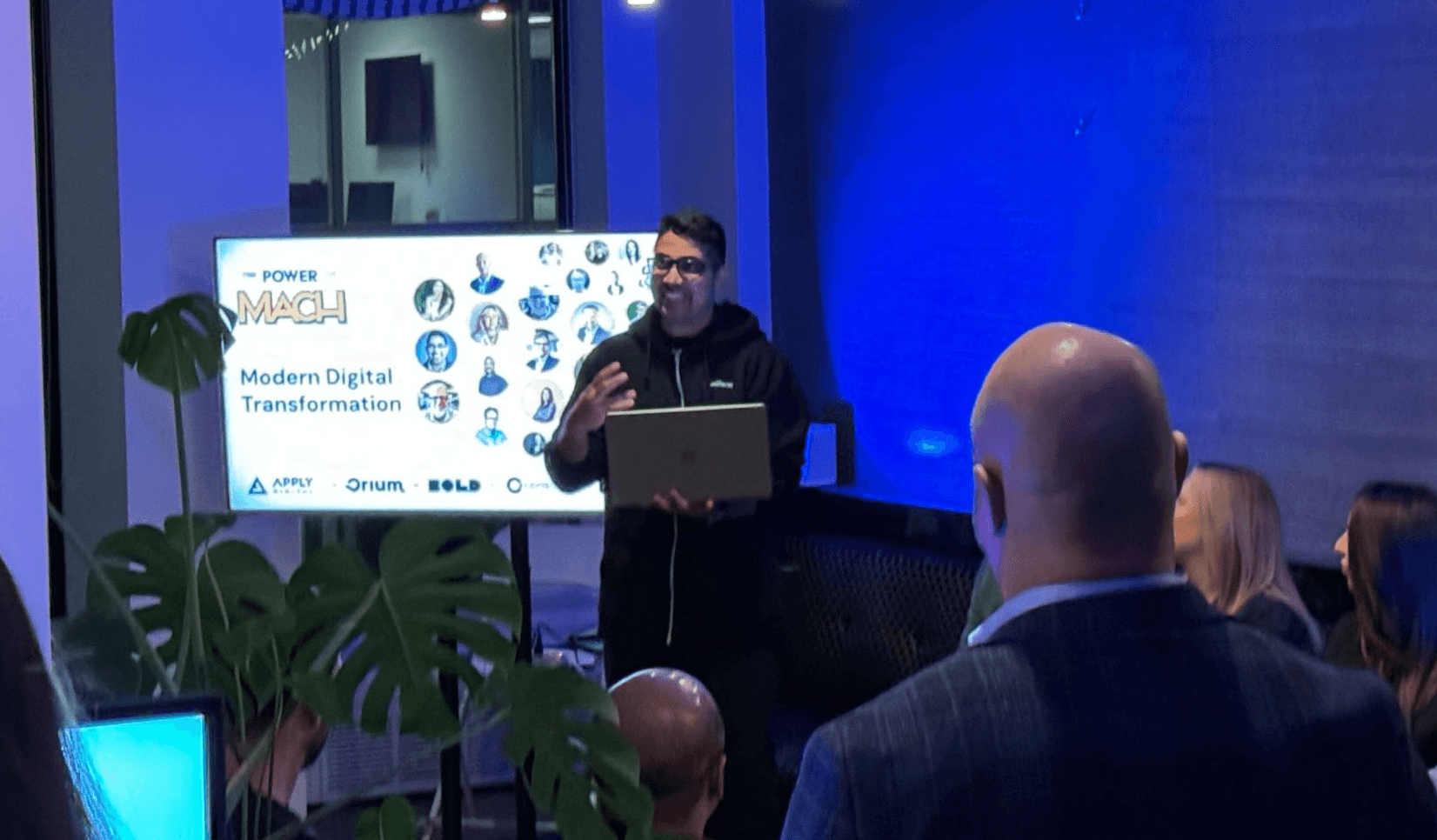Uniform blog/The other CPM to worry about: Complaints-per-month
The other CPM to worry about: Complaints-per-month
The other CPM to worry about: Complaints-per-month
Being a CMO is tough. You’re caught between tactical sales and pipeline goals and also have strategic targets of elevating the brand and reaching customers in new channels. This would be enough, before you even consider that marketing teams have some of the highest turnover in an organization. Any captain will tell you that it’s hard to move the boat fast if you’re constantly swapping out sailors. That’s why I always make sure to listen carefully to my teams’ complaints, and whether the complaints-per-month rate is going up.
One of the main reasons marketers leave their jobs is because they get frustrated at the tools they have to use. It’s the same reason your plumber would quit if you told them they could only use tools made of plastic: it’s impossible to do a good job. And it’s really annoying.
Unfortunately, this is the situation many marketing teams have found themselves in—especially when they are using headless services. Engineers sing the praises of these new tools, and they aren’t wrong to do that. Most of them do the jobs they were designed to do extremely well, especially on a technical level. The problem comes from their specialization and disconnection, which makes life very difficult for marketers.
While these tools have been amazing for technical teams (they do love a good API), their specialization and disconnection has made it really hard for marketers to understand where content will exist in the customer journey and how an end user will see it. If it takes five tabs and a begging Slack message to a busy developer in order to publish a regular page, it gets awfully tempting to open up a sixth tab so you can check LinkedIn for a job where you’re empowered to do great work.
As a Marketing leader, it could be easy to dismiss these issues as teething problems in a new system. That means you won’t necessarily see these problems until the resignations start to pile up, and you need to rebuild the team. Once you’ve done that, the cycle of bad tools frustrating your best talent will only continue until you do something about it.
Tools make teams effective—or ineffective
So, unless you want to fill the same job three times in two years, it’s a good idea to listen to your team’s complaints about the tools they use—even if Engineering insists that everything is great. Engineering will soon feel the impact of this problem, as I’ll explain later.
As a marketing leader, your role is to advocate hard for your team and pick the technologies that satisfy its needs. Otherwise, those folks must work in spite of their tools instead of with them, and your star performers won’t put up with that for long.
Think of a train ride that runs well for passengers. If the driver must constantly run to different parts of the train to keep it running and call an engineer for help three times a day, that’s not a sustainable situation. Or vice-versa, the driver has a lovely experience in a comfortable chair while passengers cling to the outside hoping they reach their destination. Why should you accept that in your experience stack?
A platform only works if it works for everyone
If your organization deems your stack “one big virtual platform,” your marketers have to live with that reality. As the gap between expectations of the larger stack grows, so do manual tasks and frustrations. Concurrently, so does the list of job openings you must fill.
Because they help solve many challenges for the developers of marketing stacks, headless content management systems (CMSes) have been widely adopted by mature marketing teams. These systems are cloud-centric and API-first, which brings performance, flexibility and integration advantages over legacy tools—if you implement them correctly.
But it turns out that a lot of the time, a head is really useful! By disconnecting content from its context in the customer journey, the authoring experience becomes a lot more complicated. While this approach has benefits for omnichannel delivery, it’s undeniably a very steep learning curve and a lot of unnecessary turmoil.
That’s because in many purchasing processes, the marketer experience has been a secondary—or completely ignored—concern. That means that when the new system is implemented–after a long, expensive replatforming process that doesn’t create any immediate value for your customers–common tasks like building a hero component and assigning a CTA to site visitors require a ridiculous amount of copy and pasting elements among numerous tabs and tools. That creates a huge mental load of context switching to do simple tasks.
If a marketer thinks that the best way to tell a story needs even a basic layout change such as a different color choice or to change the text alignment—this isn’t supported in a truly headless setup and they will need developer support—delaying things even more.
If it sounds complicated to create great customer experiences in a headless system, that’s because it is.
These complexities and dependencies can grind your content pipeline to a halt. That means your bets need to be bigger and you can say goodbye to agile “test and learn” workflows, or the ability to respond to market or wider strategic changes.
Frustrated editors are a big problem for developers
When Engineering leadership implement systems that work well for their developers but not Marketing, they will quickly find out that they should be careful what they wish for. Headless architectures give developers the tooling and flexibility they love, but the lack of business-user autonomy will come back to bite them.
By making life harder for marketers and other business teams, developers open themselves up to more tickets and interruptions. After a few weeks, they’ll realize that this isn’t a teething problem, but the constant Slack messages and tickets are the new normal. Constant emergency requests lead to disruptions and context switching, making it hard to plan sprints effectively and impacting delivery of the value-add features that are used to measure KPIs.
A compromise that many teams reach is adding some presentation fields to their headless CMSes, giving marketers some limited control over presentation. However, this ties the content to a particular front-end presentation—making it harder to redeploy the content to a new context or channel. This undermines the whole point of using a headless CMS.
You’re all one team so act like it
You need to work together because, ultimately, an organization can move only as fast as its slowest team. Accelerating engineering at the expense of business users (and vice versa) is always a false economy and a bad idea. That’s why smart leaders must take a step back and explore the root cause of their problem across business functions rather than assuming that their truth is the only one that matters.
Even though complaints from both business and technical teams may seem like they’re against your CMS or other tools in your stack, the true source of the issue normally lies in how they enforce a specific way of working that makes your teams’ lives harder.
Before the frustration transitions to yet another replatforming effort to “solve all the problems once and for all,” (who hasn’t heard that line before) consider implementing a solution that can meet all the teams’ needs so that everyone can work fast and effectively. With Uniform Digital Experience Composition platform (DXCP), you can—
- Empower marketers to build and preview experiences on top of those agile SaaS tools (and even legacy systems) with a clear, visual interface and a Project Map to fully understand the customer’s context and journey.
- Give developers the power and flexibility to test and deploy modern tools and frameworks to keep performance and functionality at the cutting edge of your industry.
- Speed up your team’s output and cycle time to learn and adapt, and keep pace with your customers because you can divide and conquer by working in parallel.
You can see this in action Uniform Canvas, which provides a consistent interface for business users like marketers and merchandisers to tell stories and control the presentation for every channel. In short, it’s everything they loved about traditional DXPs, but without the technical tradeoffs (or sky-high price tag).
On a technical level, Uniform Canvas allows developers total control of modern frameworks and the ability to smoothly adapt and innovate with headless and legacy tools. Both teams can then work faster and can work to their own KPIs without becoming interdependent.
As uncertainties continue to prevail in the economic landscape, the technical and marketing leaders that truly listen to what their teams need and give them the tools that propel them rather than weigh them down are the winners. Schedule a free demo to see how Uniform DXCP can lower your complaints-per-month (CPM) rate.





.png&w=1080&q=90)
.png&w=1080&q=90)
.png&w=1080&q=90)